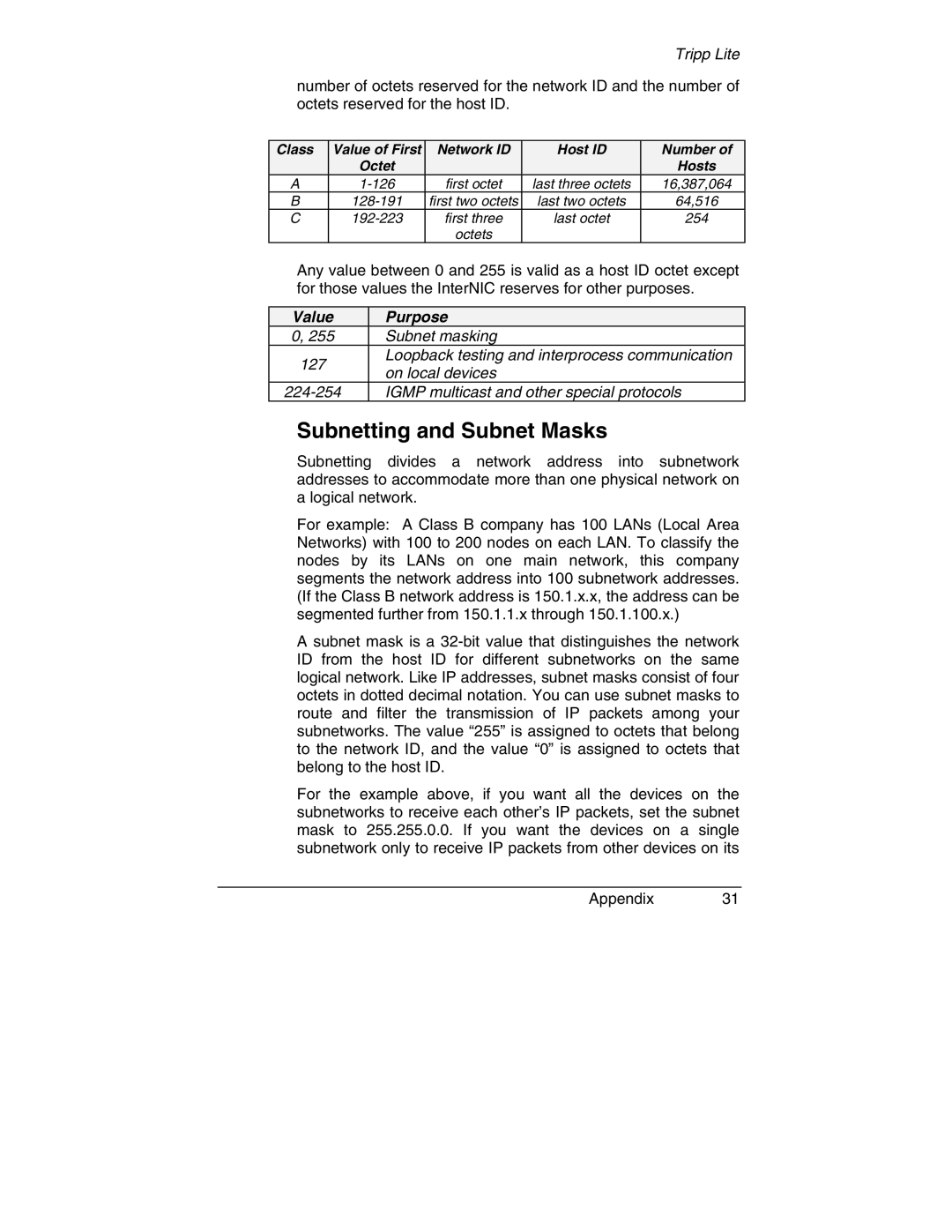Tripp Lite
number of octets reserved for the network ID and the number of octets reserved for the host ID.
Class | Value of First | Network ID | Host ID | Number of |
| Octet |
|
| Hosts |
A | first octet | last three octets | 16,387,064 | |
B | first two octets | last two octets | 64,516 | |
C | first three | last octet | 254 | |
|
| octets |
|
|
Any value between 0 and 255 is valid as a host ID octet except for those values the InterNIC reserves for other purposes.
Value | Purpose | |
0, 255 | Subnet masking | |
127 | Loopback testing and interprocess communication | |
on local devices | ||
| ||
IGMP multicast and other special protocols |
Subnetting and Subnet Masks
Subnetting divides a network address into subnetwork addresses to accommodate more than one physical network on a logical network.
For example: A Class B company has 100 LANs (Local Area Networks) with 100 to 200 nodes on each LAN. To classify the nodes by its LANs on one main network, this company segments the network address into 100 subnetwork addresses. (If the Class B network address is 150.1.x.x, the address can be segmented further from 150.1.1.x through 150.1.100.x.)
A subnet mask is a
For the example above, if you want all the devices on the subnetworks to receive each other’s IP packets, set the subnet mask to 255.255.0.0. If you want the devices on a single subnetwork only to receive IP packets from other devices on its
Appendix 31
